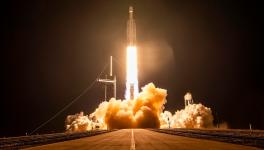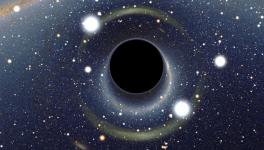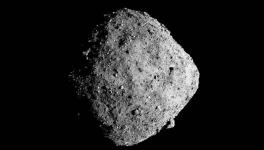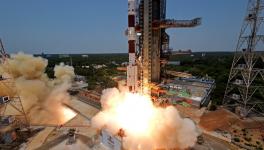Dark Side of SpaceX’s Flight of Innovation
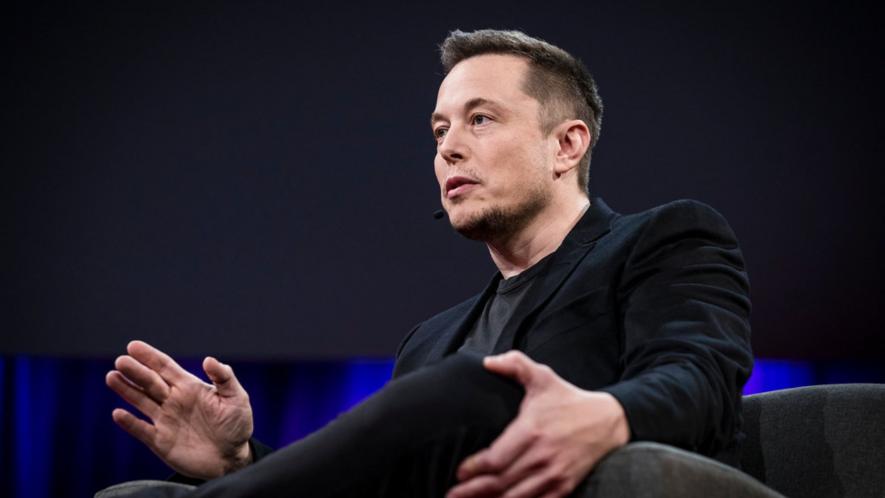
Elon Musk. Image Courtesy: Flickr
The massive Starship superheavy lift launch vehicle by Elon Musk’s SpaceX company took off on its second test flight on November 18.
The largest and most powerful launcher ever built weighs 5,000 tonnes and can carry payloads of 100-150 tonnes. The launcher is a two-stage vehicle comprising the booster and the spaceship atop, both stages powered by SpaceX’s own Raptor engine, 33 of which power the booster.
Starship itself is highly innovative and intended to be fully reusable to sharply reduce launch costs, a cornerstone of Musk’s vision for earth-orbital and inter-planetary missions.
Starship, intended to supersede its Falcon Heavy launcher, has been selected by NASA to return humans to the Moon after more than 50 years under the Artemis mission, scheduled for 2024 or 2025, and for missions to the new space stations being built orbiting the Earth and the Moon.
Subsequently, SpaceX plans to use Starship towards Musk’s vision, or rather obsession, for interplanetary travel, especially to “colonise” Mars and make humans a “multi-planetary species”. Nobody can accuse Musk of not dreaming big and trying to make it happen!
On this test flight, the spacecraft was not intended to fully orbit the Earth but to go eastwards, almost around the planet from SpaceX’s Starbase at Boca Chica in Texas, USA, and splash down in the Pacific Ocean off Hawaii while the booster would splash down in the Gulf of Mexico and be recovered.
However, after the second-stage spaceship successfully separated from the booster, the latter fell out of control and exploded midair. Nevertheless, the spacecraft continued on its planned path and reached its planned suborbital altitude of 148 km when, instead of coasting around the Earth, it seemed to veer off trajectory, lost communications with mission control, leading the automated flight termination system to trigger a self-destruct explosion over the Gulf of Mexico.
SpaceX described it as a “rapid unscheduled disassembly”, as creative a characterisation of an explosion as any!
The first test flight of Starship in April also witnessed the huge booster explode mid-flight when the second stage failed to separate.
Explosive innovation
Despite the explosive end to last week’s test flight, it was described by SpaceX spokesperson as “an incredible successful day”.
NASA, which has pinned its hopes for the Artemis mission and much more on Starship, congratulated SpaceX for “the progress on today’s test flight, [saying] Spaceflight is a bold adventure demanding a can-do spirit and daring innovation”.
Indeed, SpaceX has moved forward considerably since the first full-fledged test flight. Besides the booster explosion, that test had shattered the flat concrete launchpad and left a deep crater under the launch platform by its sheer power, sending large pieces of concrete, other debris and dust raining down on the nearby town.
Some environmental groups and Native Americans have filed suit against the Federal Aviation Administration (FAA) for environmental damage caused by operations at Starbase.
Despite NASA’s extreme tolerance towards SpaceX, the FAA, which must approve all space flights after due diligence, was compelled to issue a long list of 63 corrective measures which SpaceX must, and had, complied with before the next test flight was permitted.
Three major innovations in particular may be noted, two between the first two test flights.
A new “deluge system” was introduced under the launch platform on which the booster and second stage are stacked. The basic idea is simple: some reports say as much as 360,000 gallons under pressure was thrown upwards for about 25 seconds through a massive steel disc with holes like an inverted showerhead.
The spray was targeted at an angle of about 45% so as not to damage the rocket engines above. This huge water spray absorbed the enormous heat generated during the launch burn and protected the launchpad and surroundings. Journalists and others who visited the site after the test flight have testified that the launchpad is intact and that there was no debris in the surrounding area.
Another innovation was the “hot staging” strategy to overcome the problem of the second stage not separating from the booster in the first test flight. In this test, the engines (also Raptors) on the second stage started firing even while many of the 33 engines on the booster were still firing, ensuring that the second stage separated from the booster using brute force.
This wasn’t done for the first time though. The hot staging technique was used earlier in spaceflight, such as in NASA’s Titan 2 rockets in the Gemini series in the 1960s and in the Soviet Soyuz rockets.
Game Changer
The game-changing innovation in Starship, yet to be fully realised, is its full reusability. SpaceX’s workhorse Falcon9 rocket now regularly flies missions with reused rockets although only the first stage is reused after several weeks of refurbishment while the second stage is jettisoned.
Starship aims to be fully reusable with the booster stage descending vertically to the launchpad after an atmospheric “flip” manoeuvre being captured by two mechanical arms nicknamed “chopsticks” attached to the launch tower and ready to be stacked with reused spaceships or other payloads for the next launch.
Falcon 9 has been launched once a week over the past few years. SpaceX plans monthly launches in the build-up to certification for Artemis and, once fully ready, has ambitions of multiple launches per day.
This brief story encapsulates the technology development methods adopted by Musk and SpaceX, which he leads in his inimitable hands-on style. Rapid innovation and improvement, frequent tests, pushing technologies to their limits, explosions, crashes, learning lessons and more innovation.
The development of reusable rockets and the Falcon 9 series followed this trajectory rather than NASA’s slow, careful, step-by-step design-to-perfection and testing strategy. It has astonished many but has brought success to SpaceX and Musk compared to its more staid public and private sector rivals.
For example, NASA awarded contracts to the venerable Boeing Aerospace and SpaceX in 2014 to develop spacecraft for taking astronauts to the International Space Station (ISS) at $4.2 billion and $2.6 billion, respectively. Boeing’s Starliner has not been launched even once while SpaceX has flown as many as eight missions to the ISS on its Crew Dragon spacecraft.
WORKERS PAY THE PRICE
However, there is a dark side to this story of brilliant but rash and headstrong innovation. It has come and is accompanied by systemic and wilful neglect for workers’ safety by SpaceX and a major slackening of regulation and oversight by the state and its major agencies like NASA, FAA and Occupational Safety and Health Administration (OSHA).
The report of a deep first-hand investigative study published earlier this month by Reuters has blown the lid off the scandalous conditions at SpaceX facilities, where workers are subject to high stress and the lack of protection or safety procedures in a dangerous work environment.
Horrendous injuries to workers due to the absence of safety gear, lack of precautions and lackadaisical attitude of supervisory and managerial personnel, all with little or no compensation to the injured workers, have been documented.
Heavy parts left unsecured falling on workers, workers falling off moving vehicles while being asked to hold on to large components, machinery being started without warning and safety protocols, causing severe injury to other workers, and other sickening stories.
Shockingly, regulatory agencies such as the FAA, OSHA or the main contractor, i.e., NASA, which has paid $11 billion, have exercised little oversight and have yet to take action to hold SpaceX to account.
This has revealed the ugly side to the handing over of the space industry to the private sector since NASA exited the launch business with regulatory agencies themselves accepting toning down their oversight at high cost to workers.
After numerous workers complained to regulators, SpaceX, in response, claimed that the company had no responsibility for workers’ safety, that they should take care of themselves, and that designated “responsible officers” were tasked with ensuring.
Many former and current staffers Reuters interviewed stated that this work culture was mainly due to Musk’s disdain for “bureaucratic structures,” an attitude that fits with his libertarian and anti-regulation views.
Interviewees also said that Musk’s firm belief that the Earth will soon destroy itself and his messianic zeal to build space systems to escape the planet and settle human colonies on Mars has an almost cult-like following within SpaceX.
Musk’s association with and tacit support of right-wing conspiracy theories and the recent support for anti-Semitic rants on X fit a nasty pattern.
This other side of Musk and his SpaceX cannot be ignored.
The writer is with the Delhi Science Forum and All India People’s Science Network. The views are personal.
Get the latest reports & analysis with people's perspective on Protests, movements & deep analytical videos, discussions of the current affairs in your Telegram app. Subscribe to NewsClick's Telegram channel & get Real-Time updates on stories, as they get published on our website.










